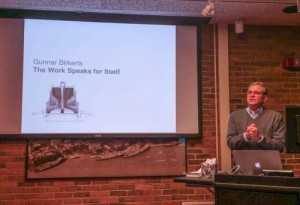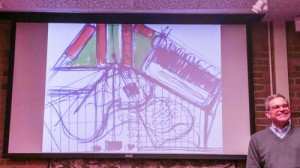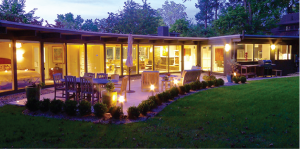Albert Kahn: Under Construction
A Review of the Albert Kahn Building Projects, 1903 – 1943,
University of Michigan Museum of Art
February 27 to July 3
The north wall on level three at the University of Michigan Museum of Art has become Bentley Historical Library turf in the ongoing collaboration between these two kindred institutions. Albert Kahn: Under Construction, a gathering of documentary photographs generated by Detroit architect Albert Kahn’s building projects around the world is the latest installment in an ongoing series of joint exhibitions. Curated by Claire Zimmerman, Professor of Architecture, Albert Kahn: Under Construction surveys the years 1903 to 1943, during which Kahn actively managed an architectural firm that by the early twenties had grown to be the largest in the country. The exhibit dutifully documents stages in the actual construction of selected buildings, but revealed through the accumulation of these 130+ images is a a portrait assembled photo by photo of a man of exceedingly large vision who actively constructed a creative, nimble and versatile organization that helped shape significantly our modern American identity.
Here are some highlights: The photographs have been arranged in nine of eleven panels. Five categories identify the purposes of the selected buildings: Photograph (shows the range of projects), Manufacture (looks at factories and warehouses), Buy and Sell (focuses on city office buildings), Explore and Enlighten (deals with educational and religious structures) and Fight (highlights factories designed for the mass production of large-scale war machines like tanks and heavy bombers).
The projects cover a wide range of building kinds, but the 16 selected for display are significant and soundly represent what was typical of the more than 1,900 buildings produced by the Kahn office within these years.
1903 Packard Motor Company, Detroit
1912 Bates Manufacturing Company, Maine
1915 Natural Sciences Building, Ann Arbor, Michigan
1916 Ford Factory, Omaha, Nebraska
1917 The Vinton Building, Detroit
1917 Krolik and Company, Detroit
1921 Durant Building (General Motors Headquarters), Detroit
1924 Ford Motor Company Power House, Iron Mountain, Michigan
1929 Stalingrad Tractor Plant, Stalingrad, Russia
1930 Autostroy Forge Corporation, Moscow, Russia
1930 Shaarey Zedek Synagogue, Detroit
1938 Chrysler Half-Ton Truck Plant, Warren, Michigan
1939 General Motors Building, New York World’s Fair, New York City
1941 Glenn Martin Assembly Plant, Omaha, Nebraska
1941 Chrysler Tank Arsenal, Warren, Michigan
1943 Willow Run Bomber Plant, Ypsilanti, Michigan
The five categories of building types allow for a chronological arrangement, while the accompanying texts identify key issues and clarify sometimes hard-to-see details. However, on the panels themselves narrative sequencing often proceeds counter intuitively, from right to left rather than from to left to right. Under Explore and Enlighten, panels seven and eight (counting from the left side of the display), for example, the stark image of a steel frame forming the sides and roof of the Shaarey Zedek synagogue (center photograph on the bottom row on panel seven), demonstrates how skeleton and cut stone cladding go together to make a traditional structure. But the story of Shaarey Zedek actually begins on panel eight, so that the evolution of this building tracks from right to left. This trope of reading backward is repeated on other panels. The intention is to counter expectations and by doing so draw closer attention to the content of each photograph.
Another fine surprise is the cluster of photographs on the lower half of panel eight showing massive metal roof trusses being fabricated at Lehigh, Pennsylvania, and by the McClintic Marshall Production Company in New York City. Until the Russians had facilities of their own, design and construction of trusses for their factory buildings took place in the US. These pictures capture close up not just the scale but also the craftsmanship and the elegance of these purely functional elements in factory construction.
In the middle of panel five (under Buy and Sell) a photo of the Durant Building/ General Motors Building presents all four of the magnificently towering blocks of this immense and nearly completed project. To track the evolution of the Durant Building going up, however, begin at the bottom of panel six and work backward. To add to our understanding of the complexity attendant on urban building projects, the modest Vinton Building has been juxtaposed to the Durant Building. Pairing these two projects that were built so close together in time helps with understanding the rapid expansion of Kahn’s architectural office as Detroit escaped the constraints of war rationing and the labor shortage.
The last two panels (Fight) reflect changes both in design and in use of materials as dictated by new requirements for mass production. Even more vast interior spaces for building large, heavy machines for war were needed, and the scale was set for these colossal buildings well before Roosevelt’s declaration of war. The buildings rose rapidly out of empty fields, their proportions shockingly beautiful. Photos showing the fabrication of metal skeletons and then the application of concrete strips convey sleek, aerodynamic qualities in the designs, which become even sleeker when enhanced by ribbons of glass. The special knowledge and skill involved in selecting the photographs for all the projects presented in this exhibit show through everywhere, but these last spectacular choices confirm the fact that Kahn’s firm, right up to his death in 1942, was constantly advancing in its capability of building practically, efficiently and beautifully whatever the need.
More needs to be done both to illuminate the practices of the photographers who took the pictures and to comprehend the methods and interests of the various contractors brought in to do the work of construction. On panel ten, for example, photos of the Glenn Martin Assembly Plant show in one instance black men digging a foundation while next to it is a shot of what appears to be a low-cost workers’ housing development. How were black workers housed? How were they treated? How were vast sites taken in hand so that the work was sequenced, the materials brought in on time, and the daily schedules adjusted to occupy the workforce of men? Such questions cannot be addressed by a concise and intense show like Albert Kahn: Under Construction, but this show, the first of many it is hoped, opens the way for the investigation of new questions. The photographs on display are accompanied by an account book, an issue of Architectural Forum featuring Kahn’s buildings as of August 1938, and a typical scrapbook for holding and organizing a project’s pictures. These items enrich the encounter with Kahn’s routine photographic documentation of his projects and it is a pleasure to have them available in the two vitrines on each side of the display. One last note: along with photos of two projects conducted for the Soviet government, there is a map with data and diagrams showing the Soviet Union’s 5-Year Plan, 1928 – 1933, for modernizing Russia. It is a treat to be able to study this map in its large-scale format.
By Jeffrey Welch, April 6, 2016


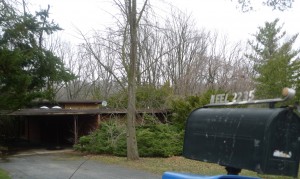
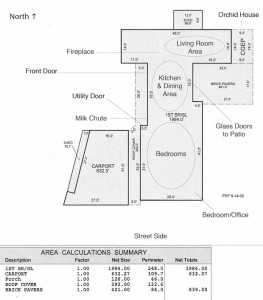
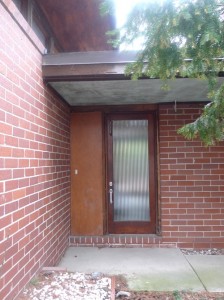
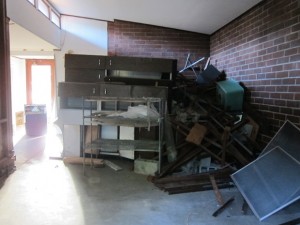
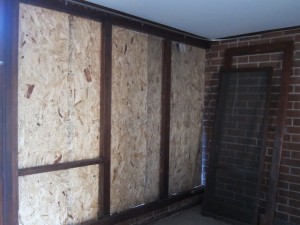

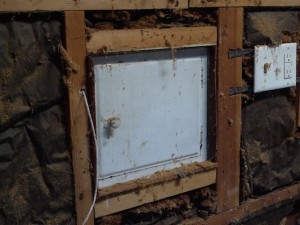
 Modern Cuba: Slideshow by Howard Shapiro in his 1965 Alden Dow house, 7 Regent Drive
Modern Cuba: Slideshow by Howard Shapiro in his 1965 Alden Dow house, 7 Regent Drive
